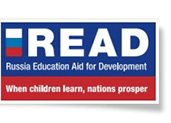International Perspectives by Marguerite Clarke – How countries use their international large-scale assessment results: The example of Trends in International Mathematics and Science Study (TIMSS)
Large-scale assessments of educational achievement are key to understanding the overall performance of an education system and the factors driving this performance. International large-scale assessments have the added benefit of a comparative perspective. When the results first come out, there is great excitement in looking at the relative rankings of countries. But how do countries go beyond these lists and actually use the results to improve their education systems? This issue of International Perspectives looks at countries’ uses of the Trends in International Mathematics and Science Study (TIMSS) results as an example.
TIMSS was established by the International Association for the Evaluation of Educational Achievement (IEA) in 1995. By 2015, 57 countries and 7 benchmarking participants were taking part in the cross-national study. Every four years, TIMSS measures the math and science achievement levels of students in Grades 4 and 8 (and, less frequently, the final year of secondary school). Achievement is measured by administering curriculum-based tests to a nationally representative sample of students. Background data is also collected from school principals, teachers, students, and others. Many countries use TIMSS to benchmark their system-level achievements and trends in a global context. This is done by comparing the country’s performance relative to others on a single TIMSS exercise or by comparing the country’s growth over time relative to others. Oftentimes, underperformance initiates educational reform
Read more in READ Trust Fund Newsletter.







